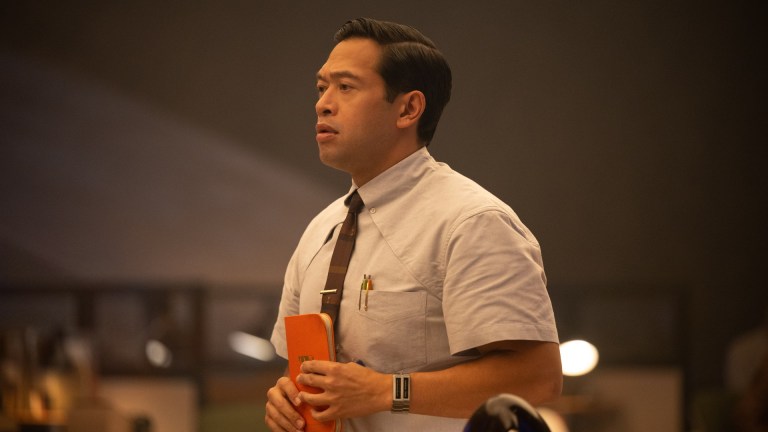Loki Season 2: Frank Morris Easter Egg Explained
Casey's true identity is based on a real-world Alcatraz mystery involving Frank Morris and two other prisoners.

This article contains spoilers for season 2 of Loki.
We’ve known since the end of Loki season 1 that all of the employees of the TVA are variants with no memory of their past lives on the timeline. This means that Mobius (Owen Wilson), Hunter B-15 (Wunmi Mosaku), and even Casey (Eugene Cordero) all have past lives and personalities that have been suppressed and kept a secret for as long as they can remember. That is, until the Temporal Loom collapses and everyone is forced back to their original timeline. Of the lives we get to see in season 2 episode 5 “Science/Fiction,” most aren’t far off from their TVA counterparts. Casey’s true identity, however, is a bit surprising.
It turns out that Casey’s life on the timeline is based on a real-world Alcatraz escapee named Frank Morris. The real Frank Morris was convicted multiple times for larceny and burglary throughout his life before eventually being sent to Alcatraz, the infamous prison island in the San Francisco Bay, in 1960. Two years later, Frank, along with brothers John and Clarence Anglin, who are played by Loki directors Aaron Moorhead and Justin Benson in episode 5, staged an escape from the island almost exactly like what we see on the show.
The real-world trio created fake heads out of cotton sheets, soap, paint, and human hair to fool the guards into thinking that they were in bed. They also carved holes through their cells to the unguarded utility corridor next door using only spoons from the dining hall and a makeshift drill fashioned from a vacuum cleaner. Thankfully, Frank had a specific time allotted in the evenings to practice the accordion, which apparently helped to drown out their digging.
The escapees’ boat was made out of raincoats and hand-made resin that they learned to make from magazine articles they read in the prison’s library, and therefore not very sturdy. Even though Frank and the Anglin brothers seemingly made it off the island, there’s no record of them making it to shore. After their escape, a raft was found with a few of their personal effects tied up in a plastic bag, but many believe that the inmates themselves didn’t make it across the water.
There are some theories that suggest that the Anglin brothers survived the journey and escaped to Brazil, where they lived out the rest of their days on a farm, but the official conclusion is that all three men drowned. The FBI officially declared the men dead in 1979 after their investigation yielded no results, but the U.S. Marshall’s case is technically still open to this day. As far as everyone knows, Frank and the Anglin brothers just vanished off the face of the Earth, never to be seen again.
Not only is Frank starkly different from the lovable nerd that Casey is, but that also begs the question of what Nexus event got him plucked from the timeline in the first place. Since Frank and the Anglin brothers were able to make their escape in the real world, that doesn’t seem like the likely trigger. Maybe this version of Frank survived the journey across the Bay and that led to his removal from the timeline.
Regardless, it’s fun to see Loki once again use enigmas of the real-world to bolster the backstory of familiar characters. We learned last season that the infamous D.B. Cooper is actually Loki (Tom Hiddleston), and he only hijacked the plane because he lost a bet with Thor. With the timeline of Loki constantly changing and new branches forming, there’s no telling who else could have a secret past connected to some of our world’s most intriguing unsolved mysteries.
